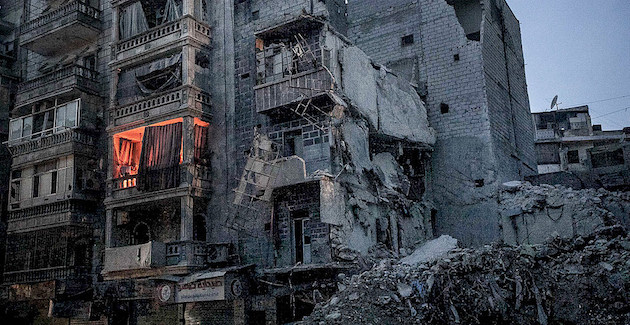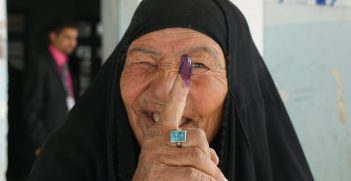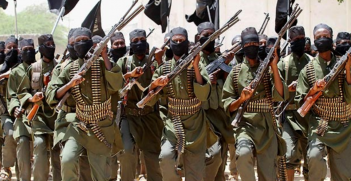Urban Conflict Inflicts Suffering on a New Scale

As the battle for Mosul nears its end this week, an estimated 50 million people continue to live in cities torn by conflict. Urban battles have now become a prominent part of war: in Mosul, Aleppo and elsewhere they are creating humanitarian crises and incubators of future violence.
With its treasured citadel dominating the landscape, the Syrian city of Aleppo has long been known as a place of rich history and culture; it is one of the oldest continuously inhabited cities in the world. Today, this ancient town is in ruins.
More than four years of intense conflict—involving systematic bombardment from both air-to-ground munitions and ground-launched artillery shells—has ripped apart the life and soul of this once bustling urban centre.
Thousands have been killed or injured, and countless others have fled, leaving behind what is now a ghost town of bombed-out apartment buildings, schools and businesses. Piles of rubble are the defining feature of the city’s once dynamic streetscapes.
The scenes that unfolded in Aleppo recently—the intense street-to-street combat, the bombing of densely populated areas, the lengthy sieges—provide a graphic picture of how wars are being fought in the 21st century. Conflicts are no longer staged on vast battlefields, pitting thousands of soldiers and heavy weaponry against each other in an expansive theatre of war. Today’s battles are taking place in cities: in people’s homes, on their doorsteps, in their streets, their schools, and their hospitals. More than 50 million people are now living amid war in cities around the world. Not surprisingly, civilians are bearing the brunt.
The International Committee of the Red Cross (ICRC) recently published a report, ‘I saw my city die’, to highlight the unacceptable human cost of today’s urban conflicts, and the findings are disturbing. The report focuses on Iraq, Syria and Yemen, which together accounted for nearly half of all civilian war deaths worldwide between 2010 and 2015. By analysing trends and data over the past three years in Iraq and Syria, the report found that five times more civilians, on average, die in offensives carried out in cities than in other battles. It is a staggering figure.
These statistics are all the more alarming as new offensives get underway in cities like Raqqa in Syria, and others intensify, as in Mosul, Iraq. In launching the report, the ICRC’s Regional Director for the Middle East, Robert Mardini, warned that today’s urban wars are characterised by a general disregard for the rules that are intended to protect civilians and civilian infrastructure in times of conflict. “A new scale of urban suffering is emerging, where no one and nothing is spared by the violence,” said Mardini.
A cost too high
In a city, everything is connected and the impacts of warfare are quickly multiplied. The length and intensity of urban wars in the Middle East, their geographic scope, and their long-term humanitarian consequences are going well beyond what we have seen in recent decades. Protecting civilians and essential infrastructure is at best an afterthought, and at worst, a tactic of war.
Too often in today’s conflicts, explosive weapons that have wide-range effects are used in densely populated areas, with devastating consequences for the civilian population. These explosives kill not only with the blast, but also by sending fragments flying through the air in all directions. Even when aimed at a military target, these weapons are likely to have indiscriminate effects when deployed in urban areas where fighters are often mixed in among the civilian population. According to some estimates, civilians represent 92 per cent of the deaths and injuries caused by the use of explosive weapons in populated areas, compared to 34 per cent when these are used in other areas.
The use of these weapons also has various long-term impacts on a city. As illustrated in ‘I saw my city die’, a single pipe broken by a high-impact explosive weapon can deprive 100,000 people of water. That same weapon may also destroy the neighbourhood’s sewage system, causing thousands to fall ill and placing further strain on already overstretched hospitals. Local economies collapse and populations flee, leaving fewer doctors and engineers, and no money to pay the salaries of those who remain. The acute pain caused by one attack triggers a ripple effect of long-term suffering that leaves no part of life unscathed. It is for this reason that the ICRC and its partners in the International Red Cross and Red Crescent Movement are calling on all parties to armed conflicts to avoid using wide-impact area explosive weapons in densely populated locations.
At the same time as this modern weaponry is being deployed, an ancient form of warfare—the siege—is making a comeback. Armed forces and groups, unwilling to risk their lives fighting in densely populated areas, are now resorting to siege. Communities are being trapped in between warring parties for months, sometimes years at a time. Civilians are suffering extreme deprivation. People living under siege, or in siege-like situations, lack even the most basic ingredients of a normal life: food, electricity, water and health care.
In Taiz, Yemen, a city that was almost totally under siege for 15 months, ICRC staff reported seeing people eating from the garbage because they could not get food, and women boiling tree leaves just to give their children some hot soup. Some of the sieges we are seeing today have already lasted longer than infamous examples such as Leningrad and Sarajevo. In light of this, siege as it is now practiced in some countries in the Middle East, is unconscionable and often unlawful.
Considering the hardship experienced by civilians living amid today’s urban conflicts, it’s little wonder that people are fleeing their cities to find safety for themselves and their families elsewhere. The wars that are destroying cities around the world are a significant factor driving the greatest global refugee and migration crisis that we have seen since World War II. By the end of 2015, some 65 million people were estimated to have been displaced by conflict or persecution. And the almost complete destruction of some cities means that many people who have fled their homes will have nothing to return to – even if the fighting were to stop.
What must be done?
The suffering that today’s urban conflicts are causing will be felt for generations, well beyond the borders of the countries at war. Unchecked, such conflicts will generate further and long-lasting hatred, making cities war incubators for future violence. As the ICRC’s new report highlights, the scale and scope of urban conflict today is impossible to ignore. Urgent and long-term commitment is needed from everyone—warring parties and the states that support them, the international community, humanitarians and ordinary citizens around the world—to improve the situation of victims of armed conflict.
At the heart of this must be a recommitment to the protection of civilians and civilian infrastructure in times of war. Winning a city after ruining it and bleeding its populace is not a victory. Warring sides, in particular, must come to terms with the full impact the fighting has on the people and the cities they ultimately hope to govern.
Andrea Lunt is the communications officer at the International Committee of the Red Cross Australia Mission (ICRC).
This article is published under a Creative Commons Licence and may be republished with attribution.





